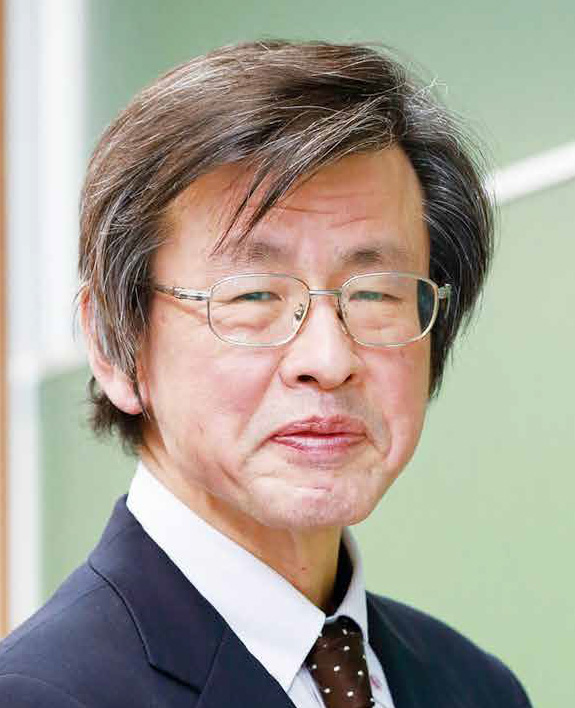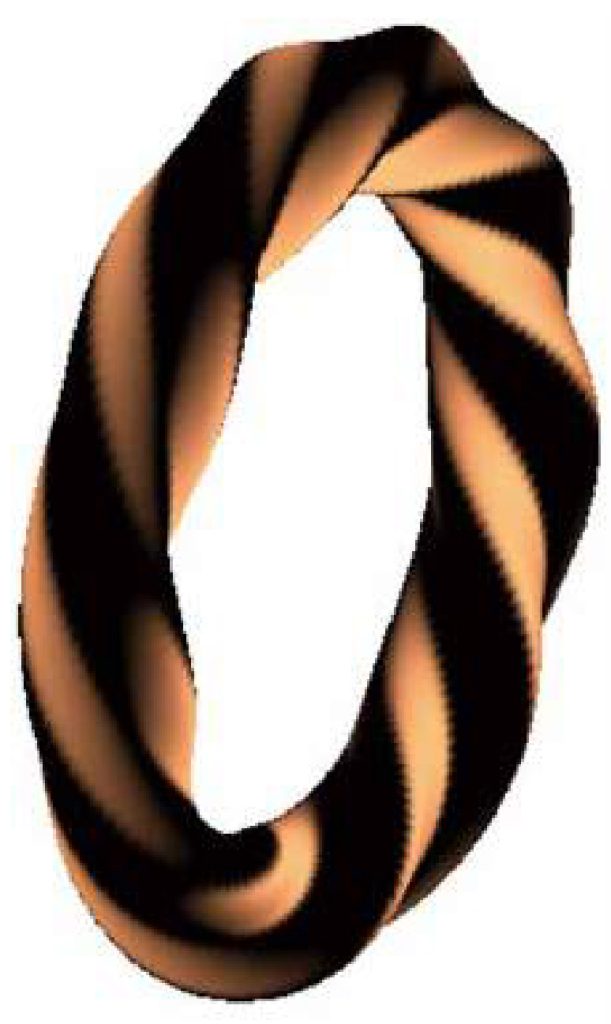Fluid Dynamics, Focusing on Vortex Motion and its Applications

FUKUMOTO, Yasuhide
Degree: Ph.D. (Science) (the University of Tokyo)
Research interests: Fluid Dynamics, Magnetohydrodynamics (MHD), Topological Fluid Mechanics
From a mathematical viewpoint, fluid motions are composed of vortices and waves. Typical examples of vortical structures include the patterns of two long lines of clouds left behind an aircraft wing and the column of air bubbles that forms above the drain hole in a bathtub. Vortex motion is a dynamical system with infinite degrees of freedom, where various modes of different sizes in a hierarchical structure, nonlinearly interacting with one another, evolve autonomously into coherent structures or into chaotic and turbulent states. Once formed, a vortex acquires functions such as ‘transporting’ and ‘mixing’ matters. It is well known that an air gun can send a specific volume of air to a far place. As exemplified by the cardiac pump driving blood flow, living organisms exploit vortex rings in various forms. The formation and stability/instability of trailing vortices are vital to safe aviation, efficiency in wind power generation by wind turbines, and the design of flying robots. In this way, nonlinear dynamics of vortices holds a key to present day issues in a diversity of fields, ranging from energy and global environmental problems to advanced technologies in the manufacturing industry.

My major research interest lies in mathematical analyses of vortex motion. Some of my results in the theory of three-dimensional vortex motion precede other groups in the world. In 1994, I became the first recipient of the Ryuumon Award, which is given to a young researcher from the Japan Society of Fluid Mechanics, for my work on three-dimensional motion of a vortex filament. We recently succeeded in deriving a formula for the traveling velocity of a vortex ring that agrees well with experiments. This formula covers not only high but also low Reynolds number regions. Moreover, we discovered a new instability mechanism of a vortex ring (Figure 1). Our group is currently developing a new Lagrangian approach for the continuous as well as the point spectra of vortex motion and for nonlinear dynamics of vortices, from the viewpoint of Hamiltonian mechanical systems of infinite degrees of freedom.
Euler first developed an approach to analyze fluid motion using partial differential equations in the 18th century, but an entire century passed before Helmholtz published his seminal paper (1858) opening up the research field of vortex motion. Helmholtz demonstrated that “in the absence of viscosity, vortex lines are frozen into the fluid”. This implies that the link and the knot types of vortex lines do not change with time. One of the thrusts of fluid dynamics in the latter half of the 20th century was to discover the topological meaning of Helmholtz’s law and to find its applications as initiated by Arnol’d (1966). However, this research had yet been limited to two-dimensional flows. The Lagrangian approach, which takes the displacement field of fluid particles as the basic variables, is capable of investigating vortex motion with rigorously maintaining topological invariants and thereby provides a common ground to investigate motions of molecules, solid (elastic) bodies, fluids, and even plasmas. I am trying to construct, by exploiting the high degree of extensibility of the Lagrangian description, a new mathematical framework in which three-dimensional interactions between waves and mean flows can be calculated, and its extension to rotating and stratified flows and to the magnetohydrodynamics. In March 2013, I held, as the chair, the IUTAM Symposium on vortex dynamics in Fukuoka. Since January 2015, I have been the Editor-in-Chief of Fluid Dynamics Research, an international scientific journal, published by the IOPP.
I was the subleader in the Global COE Program “Education and Research Hub for Mathematics-for-Industry” supported by the Ministry of Education, Culture, Sports, Science and Technology (MEXT), Japan (Graduate School of Mathematics, Kyushu University, FY2008-2012). I have organized the Forums “Math-for-Industry” (FMfI) started under this program in 2008 and the Study Group Workshops (SGW) that started in Japan in 2010. The SGW is a oneweek training camp in which mathematics researchers and students tackle with unsolved problems posed by invited companies. I made a contribution to founding the Institute of Mathematics for Industry (IMI, FY2011-) and to its receiving a certification of the Joint Usage / Research Center from the MEXT, Japan (FY2013-). Recently I have been engaged in organizing the Japanese Consignment Research Project “Mathematical Innovation powered by Mathematics Platform (AIMaP)” for the MEXT for promoting collaboration of mathematics with other fields and industrial technologies (FY2017-2021). I am now struggling for widening the frontier of industrial mathematics for dealing with social sciences and humanities.
A substantial effort has been made in training graduate students, including those in the PhD course, and in accepting students from abroad. Over 5 PhD students of my group performed the long-term research internship, with its period over 3 months, in domestic companies. Our group also actively conducts international exchange for promoting advanced research. I won the Visiting Professorship of the Japan Society for the Promotion of Science (JSPS) (Long Term) and visited the University of Cambridge for ten months in 1996 for collaboration with Prof. Moffatt on the motion of a viscous vortex ring. Since my return to Japan, prominent, world-renowned researchers have frequently visited our group to exchange information on research frontiers. Since 2001, I have hosted over 10 researchers under the Invitation Fellowships Program (Short Term) of the JSPS. In 2016, I acted as the leader of the Japanese team to jointly organize the SGWs between New Zealand and Japan. Since 2016, I have also been contributing to organizing the FMfIs in abroad, with appointing, as chairs, influential mathematician belonging to the Asia-Pacific Consortium of Mathematics for Industry (APCMfI). These activities have led us to grow an international network of first-class researchers on “Topological Fluid Mechanics”, including Prof. Moffatt, the pioneer, and Prof. Ricca (University of Milan), and on “Industrial Mathematics”, including leading researchers belonging to the APCMfI and in the USA and Europe. I intend to leverage this network to train young researchers.

